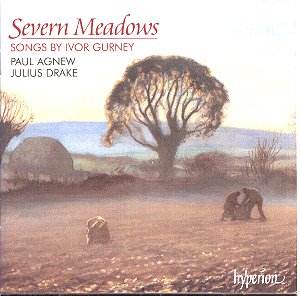 Composer: Reynaldo Hahn
Composer: Reynaldo Hahn
Works: Piano Quintet (1922), Louis Vierne – Piano Quintet (1918)
Performers: Stephen Coombs (piano), Chilingirian Quartet
Recording: Henry Wood Hall, London, 1-3 Dec 2000
Label: Hyperion CDA67258
The two piano quintets presented on this recording offer a fascinating glimpse into the emotional landscape of French music in the post-World War I era. Reynaldo Hahn, a composer often overshadowed by his contemporaries, crafted an engaging Piano Quintet in 1922 that reverberates with a romantic sensibility tempered by the palpable shadow of loss. In contrast, Louis Vierne’s Piano Quintet, composed in 1918, emerges from the ashes of war, grappling with profound sorrow and existential questioning. Together, these works not only embody the stylistic richness of the French musical renaissance but also reflect the psychological scars left by the Great War.
Stephen Coombs and the Chilingirian Quartet deliver a focused and nuanced interpretation of both quintets, each member of the ensemble contributing to a cohesive sound that is both transparent and deeply expressive. The opening movement of Hahn’s Quintet unfolds with a lyrical charm that is both buoyant and melancholic. Here, the players adeptly navigate the delicate balance between the playful motifs and the undercurrents of regret. Coombs’s piano line dances effortlessly alongside the strings, particularly notable in the Andante, where the lullaby-like quality is infused with a sense of yearning. The subtle shifts in dynamics reveal a masterful understanding of the composer’s intentions, creating an evocative atmosphere that resonates with the audience.
In Vierne’s Quintet, the mood darkens considerably, yet the Chilingirian Quartet maintains a level of clarity that enhances the emotional weight of the music. The Poco lento moderato opens with an unsettling stillness, the string players’ rich tonal colors drawing out the underlying tension. The Maestoso that follows exhibits a raw intensity, with its angular themes and rhythmic drive reflecting the turmoil of the composer’s psyche. The performance shines particularly in the Larghetto, where the ensemble achieves a haunting beauty through phrasing that captures both the severity and tenderness of the piece. Coombs’s sensitive touch on the piano complements the string ensemble, allowing moments of silence to speak as powerfully as the notes themselves.
The sound quality of this Hyperion recording is exemplary, with a balance that allows the intricate interplay between piano and strings to emerge clearly. The engineering captures the warmth of the hall and the individual timbres of each instrument, providing an immersive listening experience. When compared to other recordings, notably Pierre Verany’s version featuring the same composer, the Hyperion release stands out for its superior transparency and control. The Chilingirian Quartet’s approach is more refined, allowing the listener to appreciate the subtleties of both works without sacrificing emotional impact.
This release not only showcases two underappreciated masterpieces of the early 20th century but also serves as an affirmation of the Chilingirian Quartet and Coombs’s artistry. Their interpretations breathe life into the emotional depths of Hahn and Vierne’s compositions, illuminating the complex interplay between joy, loss, and remembrance that defines this period in music. The combination of thoughtful performance, excellent sound quality, and insightful documentation makes this recording an essential addition to any collection dedicated to the exploration of French chamber music.



